This week, I take your questions on La Liga for a mailbag special that includes Mikel Merino’s play style, Lionel Messi’s pressing under Quique Setién, league comparisons and more.
Do you think Mikel Merino has a similar style of play to Axel Witsel? And what went wrong during his time at Borussia Dortmund? (Daryl Gouilard)
I can kind of see where you’re coming from here, but if we look at their respective outputs this season they don’t really have that much in common.
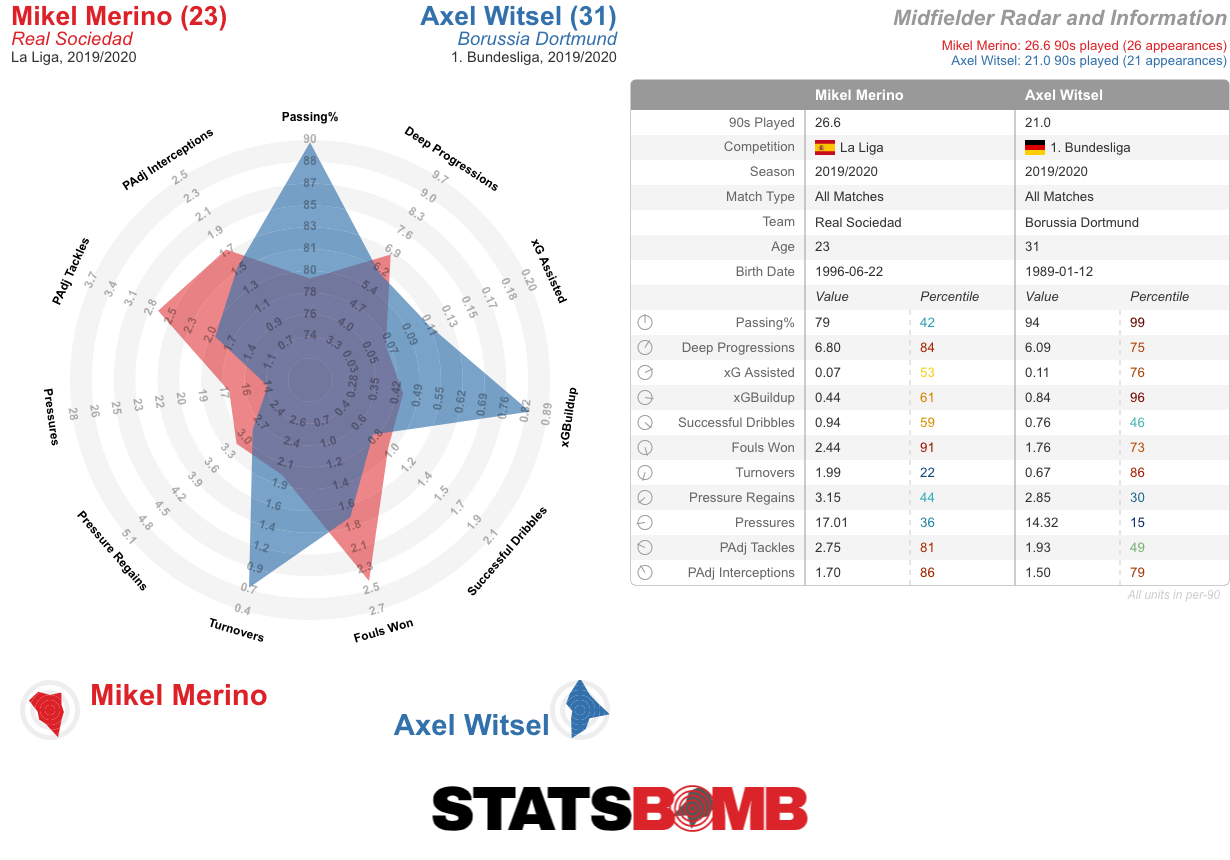
They do their defensive work in similar areas, and the difference between their numbers there could easily be accounted for by the fact that Real Sociedad are more proactive out of possession than Dortmund. Elsewhere, though, it's difficult to find many parallels.
Witsel is a lot safer in possession. He has a much higher passing completion percentage largely because he passes the ball over shorter distances than Merino and aims it forward less than half as often. Other players carry the weight of ball progression at Dortmund. Merino, meanwhile, is much more vertical in his passing; at La Real, only Martin Ødegaard moves the ball into the final third more often.
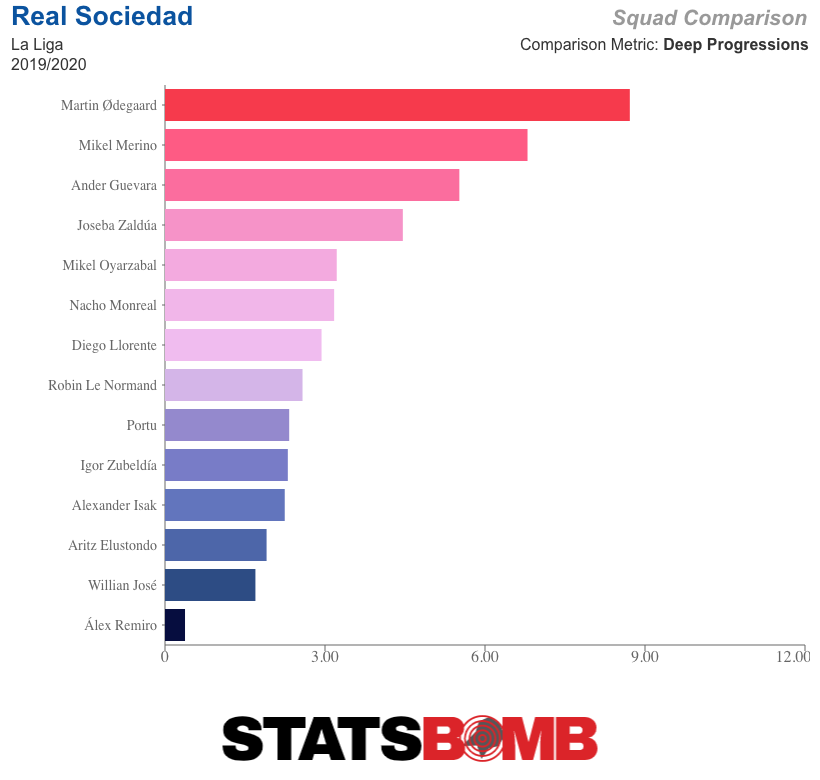
That difference is evident in situations when they are pressed by opposition players. Witsel maintains a high completion percentage by largely making low-risk choices, as shown by the map of his passes under pressure. Red = successful; yellow = unsuccessful.
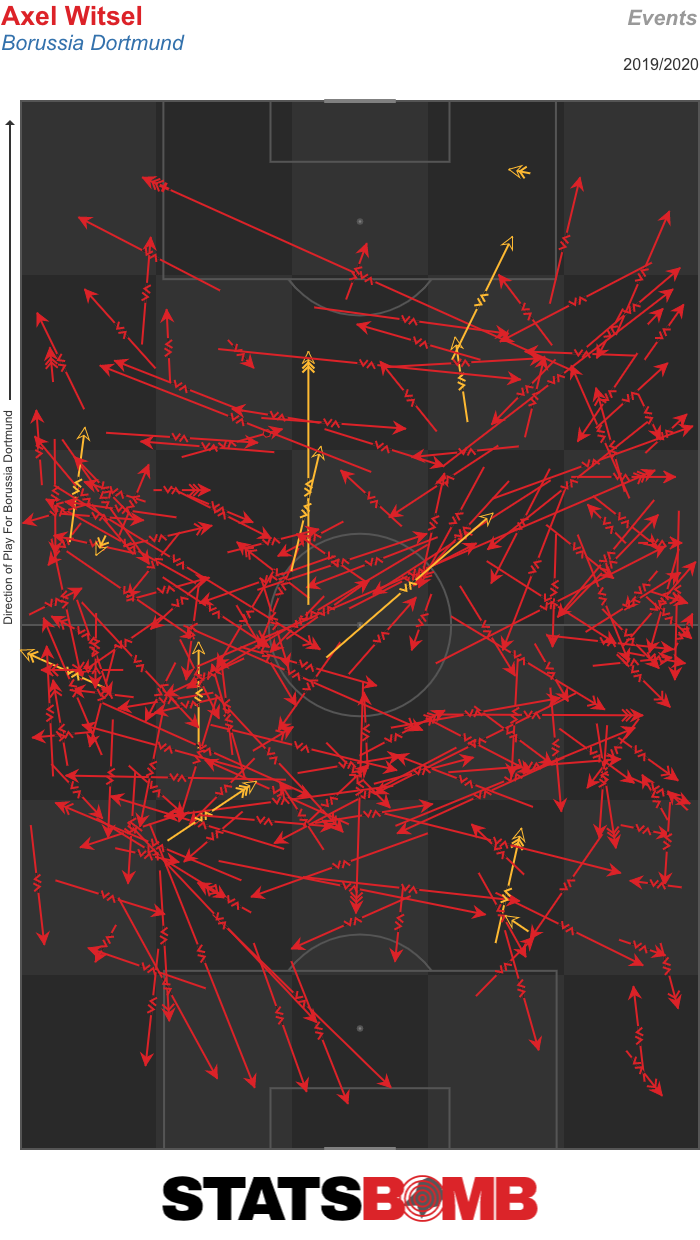
In the same circumstances, Merino passes longer and forward more often. His completion rate drops down to 70% — one of the lowest for pressured passes amongst midfielders in La Liga.
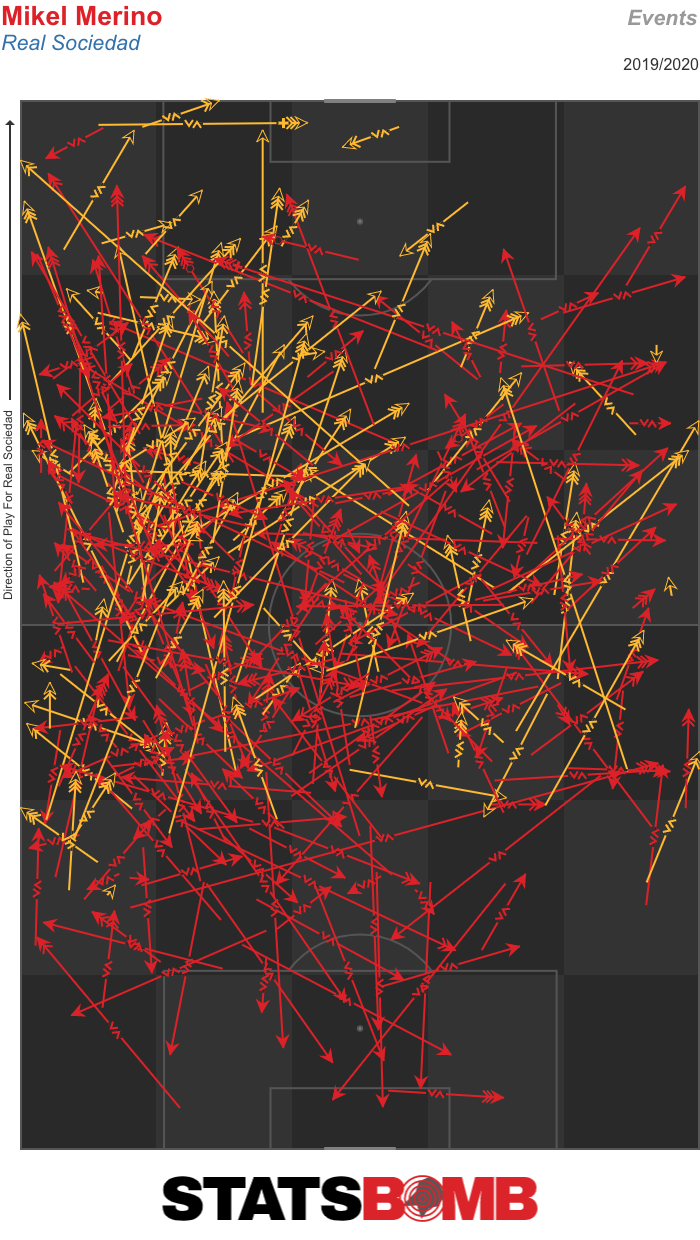
They also differ in where and when they attempt to directly take on opponents. Witsel completes a solid 76.2% of his dribbles, and rarely takes risks inside his own half.
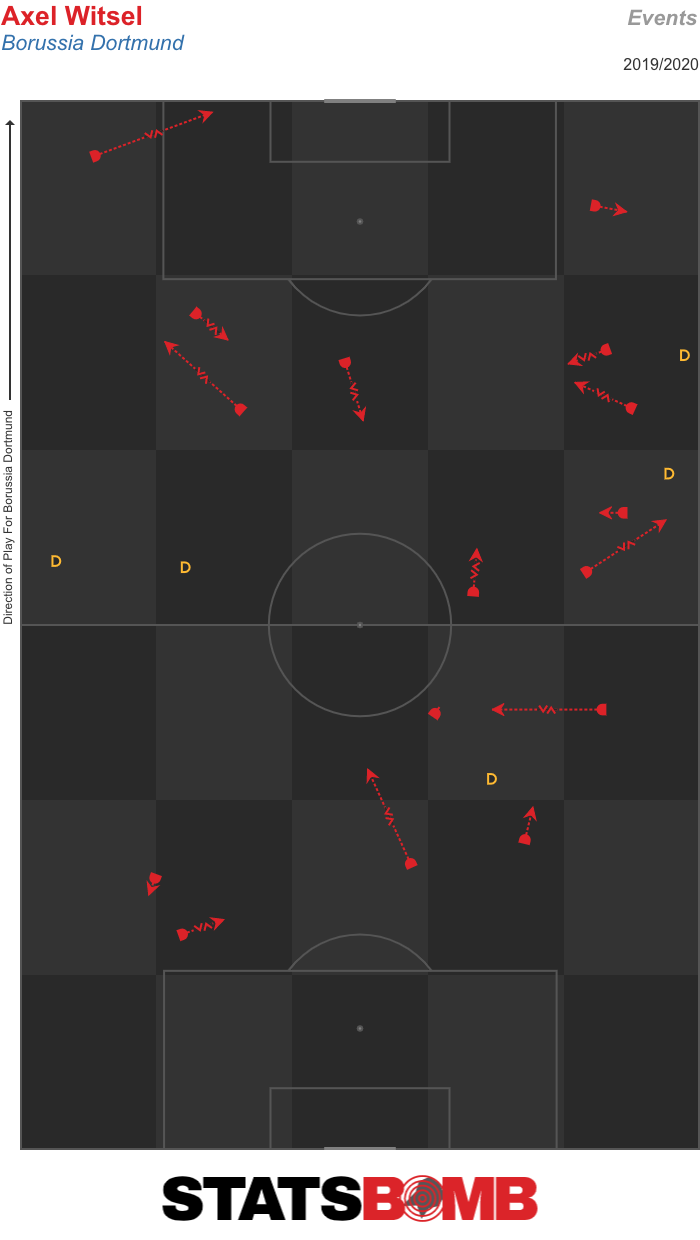
Merino more often seeks to dribble past opponents in deep areas, but he's not always successful. Across the entire pitch, he only completes 58.1% of his dribbles — again one of the lower rates among midfielders in La Liga.
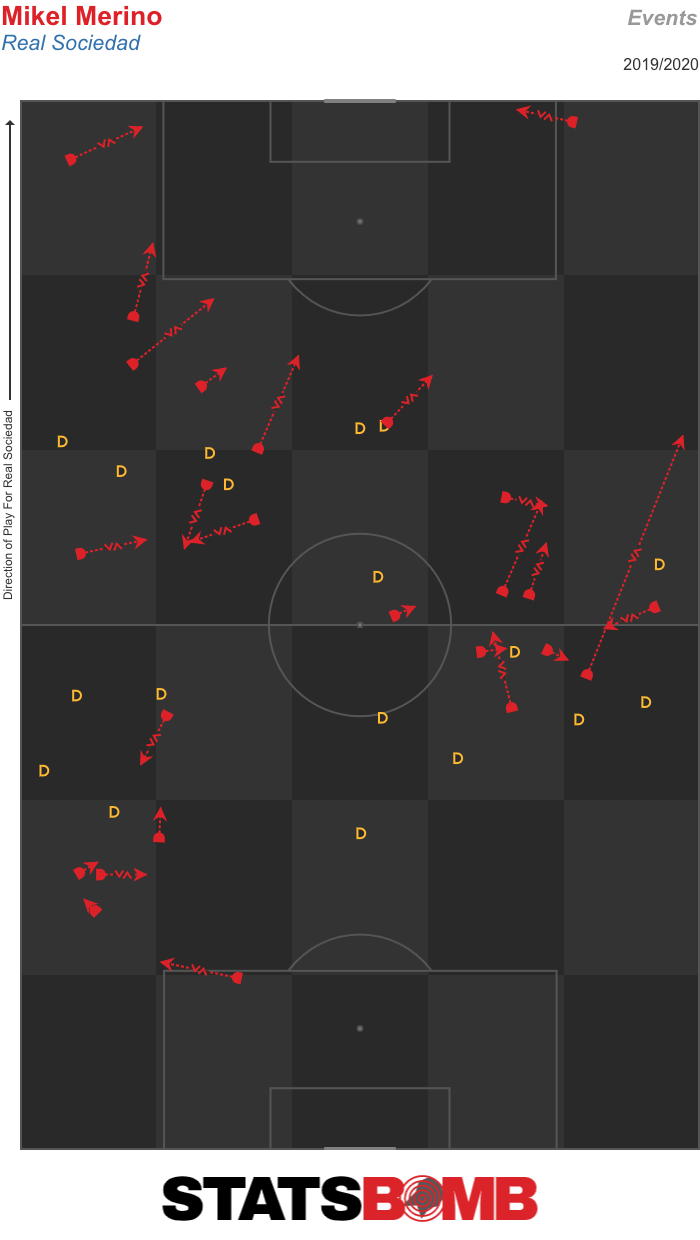
On the ball, they fit two distinct profiles: Witsel is a secure receiver and recycler of possession; Merino takes greater risks in search of verticality. But they both provide what is required of them within the systems their teams play.
What went wrong for Merino at Dortmund? I’m not a Bundesliga expert, and our data for the league doesn’t stretch back that far. It looks like they simply had an overbooking of midfielders that season. In the starting XI, Julian Weigl was mainly joined by Gonzalo Castro, while Nuri Şahin and Sebastian Rode were also ahead of Merino in the pecking order. Dortmund were happy to move him on for a decent profit just over a year after signing him.
Is Lionel Messi really doing more defensive work (pressing) under Quique Setién? (@Adeolu_KI)
We're working with a relatively small sample size, so it’s a bit too early to draw any concrete conclusions, but under Setién, Barcelona are defending a little deeper and smidgin less aggressively than they did under Ernesto Valverde.
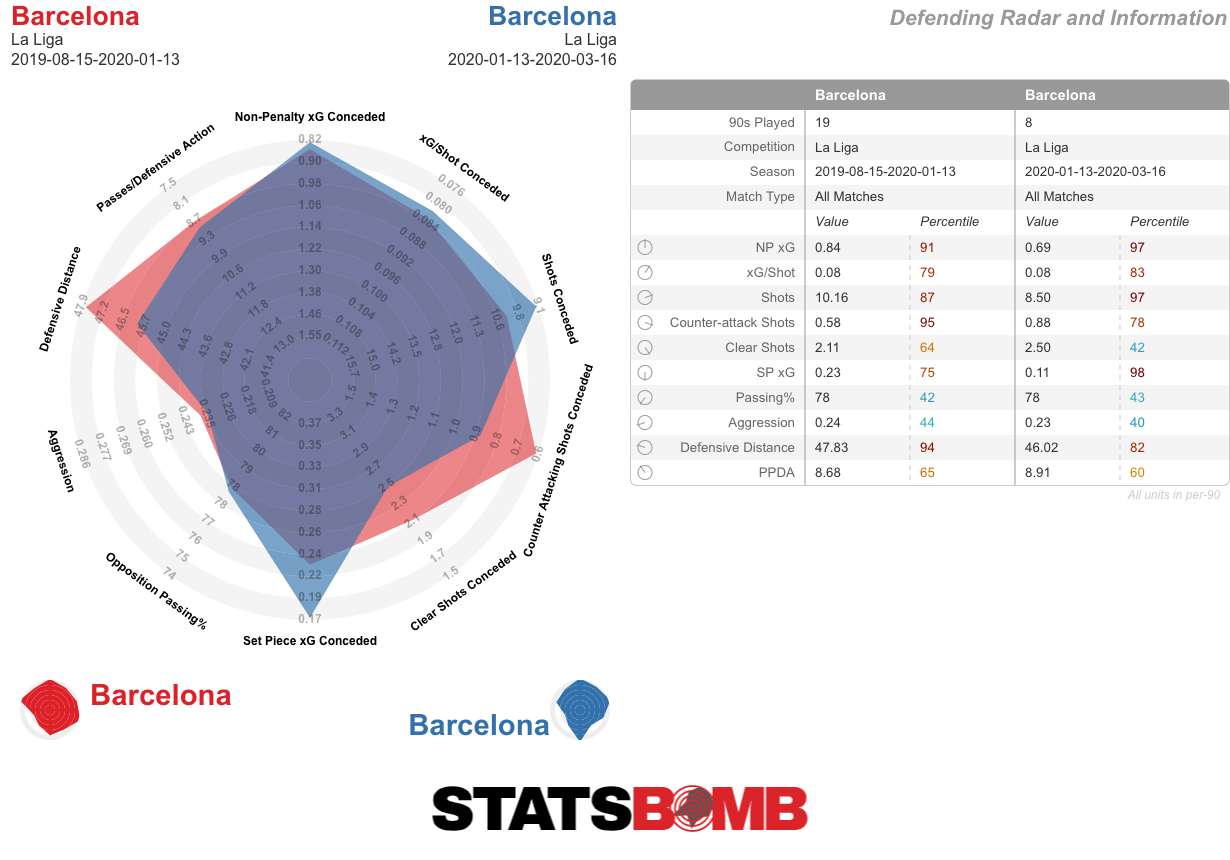
Little suggests Messi is doing more defensive work under the new coach. His volume of interceptions and tackles is marginally down, his defensive actions less often lead to opposition turnovers and his pressures and pressure regains are lower. He commits the same number of fouls as before.
What he is doing more of, and what may be catching the eye, is pressing directly after Barcelona lose possession. Both his counterpressures and the number of times his counterpressures lead to turnovers are up, the latter significantly so.
On which footballing parameters does La Liga score above the Premier League? (@sapre)
Let’s broaden this out to a comparison of the big five European leagues. I’ve written before about how La Liga compares to the others in terms of shots and expected goals (xG). On a per-match basis, the league sees the least shots and the lowest xG totals.
But what other differences stand out?
Teams in La Liga seem to find it more difficult to create shots in transitional phases of play. A lower proportion of shots come from counterattacks and high press situations than in any other league.
Average shot quality across the five leagues varies little, but the proportion of shots taken from outside the area differs. The Premier League has the lowest share (26.89%); Serie A the highest (31.46%). Rolando Mandragora seems to be on a one-man mission to drive up the Italian percentage. No player in the five leagues has taken more shots without scoring.
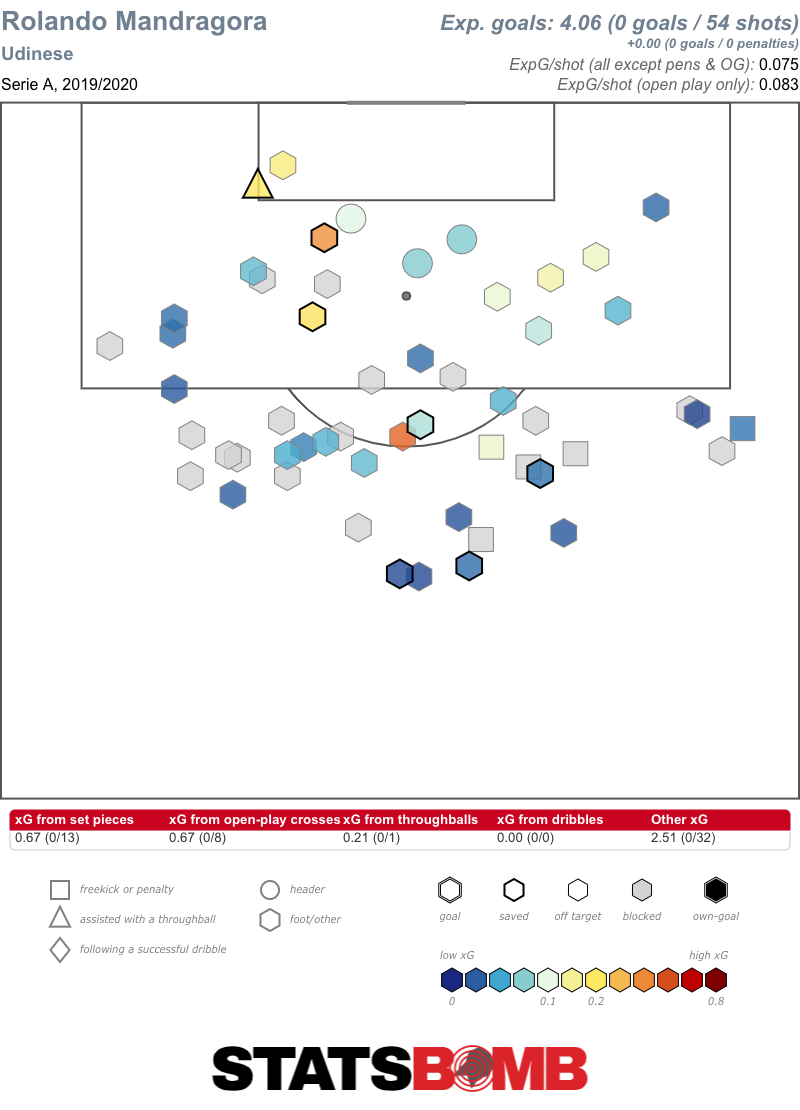
Dribble completion percentages are fairly consistent across the leagues, but La Liga sees fewer dribbles and consequently less successful dribbles than any other.
Where La Liga does stand out is in how high and aggressively its teams defend. Only Serie A is close in terms of defensive distance (the average distance from their own goal that a team attempts its defensive actions) and PPDA (passes per defensive action). Aggressive high presses tend to result in lower shot counts, which probably goes a long way towards explaining why La Liga sees fewer shots than the rest.
Finally, the ball spends a full three minutes less time in play in La Liga than it does in any of the other leagues, and four less than in Ligue 1.
How good is Mikel Oyarzabal, and how has he been affected by Isak and Ødegaard? (@RobRogers94)
Oyarzabal is good.
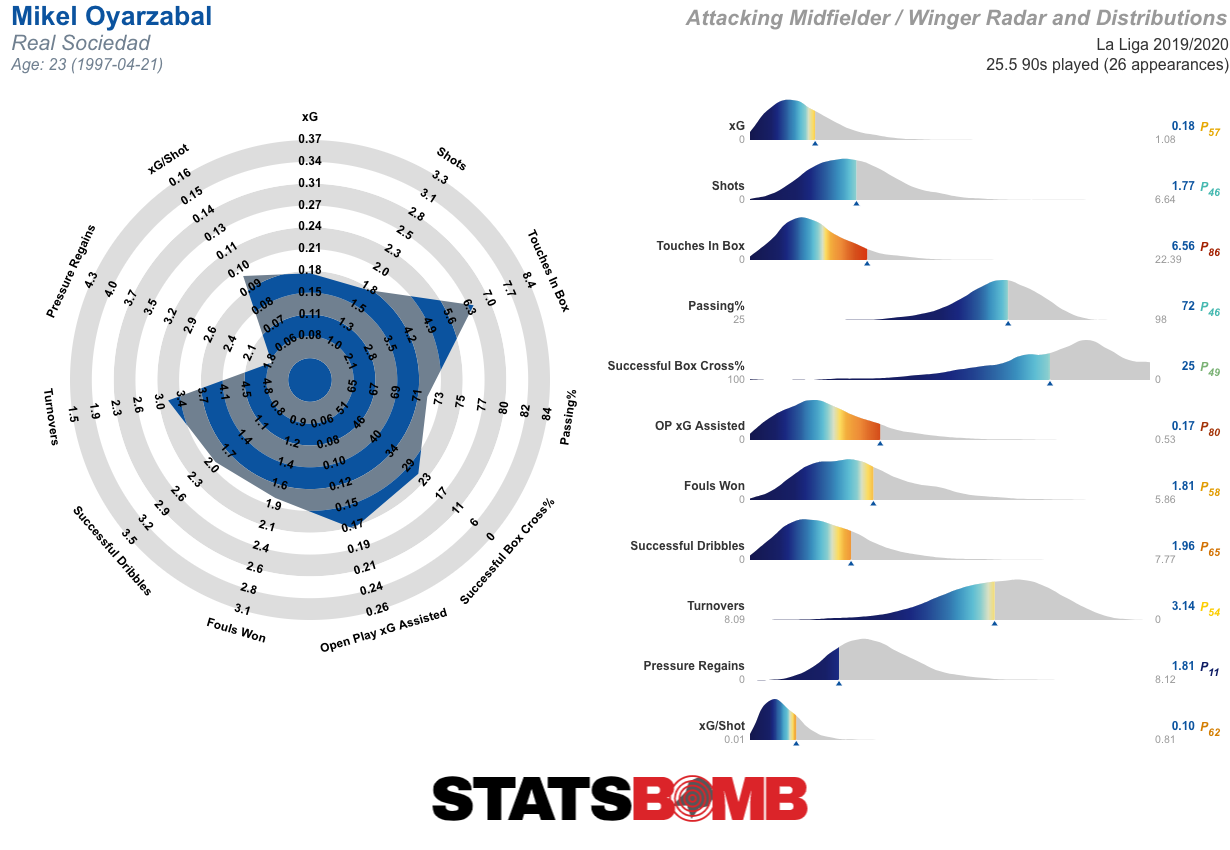
The soon-to-be 23-year-old is a competent attacking midfielder who provides solid top-line and underlying output in terms of combined goals and assists. He has 10 non-penalty goals and assists this season, while his tally of 0.36 xG and xG assisted per 90 puts him in the 67th percentile in his position across the last few seasons in the big five leagues.
That is decent. As noted above, matches in La Liga feature fewer shots and xG than those in any of the other big five leagues. If that trend continues, we might have to start recalibrating our idea of what sort of attacking output can be expected from players there. If he was to move on to a more dominant club — Manchester City have been linked in the past — his numbers would likely edge up.
One concern for potential suitors is that his combined xG and xG assisted total has remained steadily in the 0.33 to 0.36 range over each of the last three seasons. This suggests a lack of developmental progress, at least in that area of his game. La Real are a genuinely good team this year, very much in the hunt for a top-four finish, but his individual numbers remain pretty much the same.
As for the second part of your question, his game doesn’t seem to have changed all that much since Ødegaard came in at the start of the season. If anything, Portu has had a more direct effect. His arrival resulted in Oyarzabal starting almost exclusively on the left flank. From a slightly deeper starting position and without the ability to move infield onto his stronger left foot, his average shot quality has decreased. He takes slightly more shots but from worse positions.
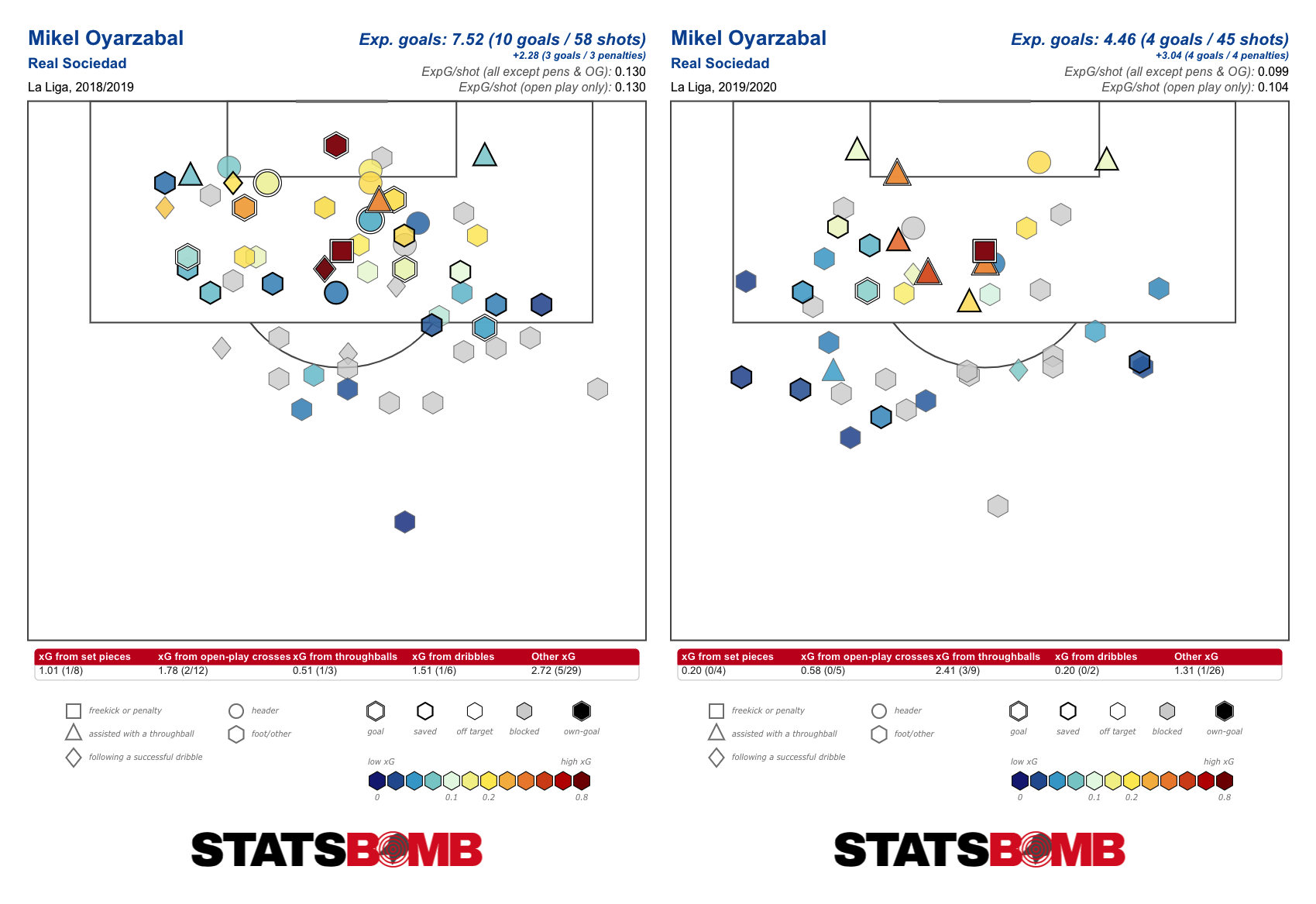
In terms of Alexander Isak, I’ve previously highlighted the differences between his style of play and that of La Real’s other striking option, Willian José. But playing with Isak again doesn’t seem to have altered Oyarzabal’s output in any significant way.